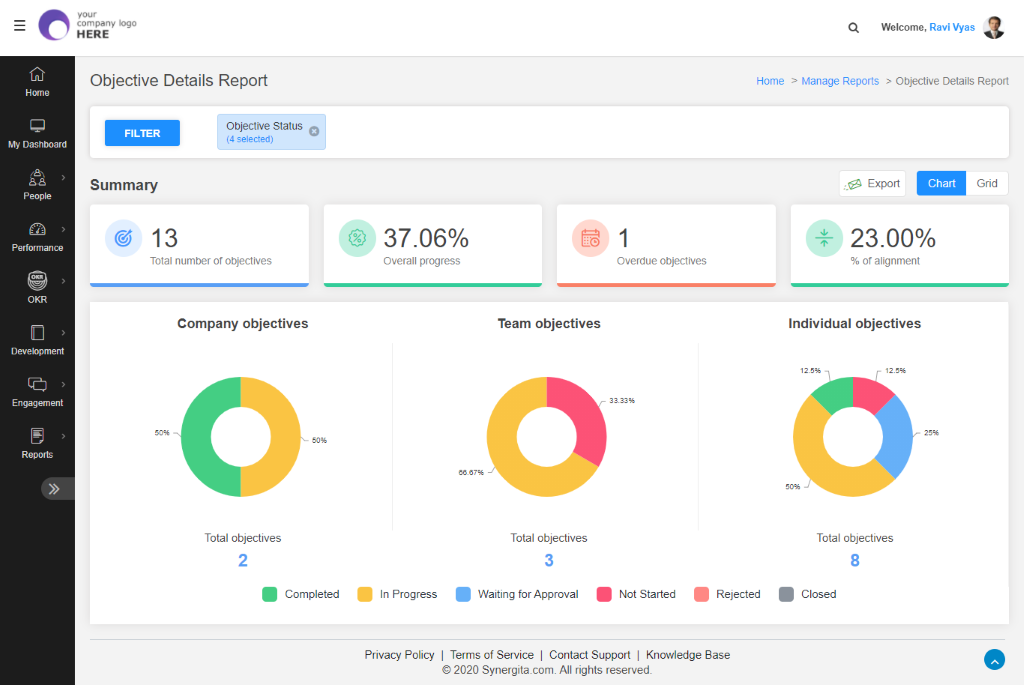Quick OKR Tips for First Time OKR User
Objectives and Key Results (OKR) is becoming the synecdoche of Google with the increasing awareness of the powerful goal-setting technique among the small to large businesses. Because Google, the popular name that is in the reach of everyone’s fingers, became successful with Objectives and Key Results as its management tool. Intel is the first example that succeeded in its Operation Crush leveraging the power of OKR.
Objectives and Key Results (OKR) enables organizations,
- To identify what really matters for an organization with short term/long term approach
- To focus the efforts of the talents toward one common goal
- To ensure Department / Employee objectives are aligned with Organizational objectives
- To Conduct short term reviews and stay agile with mid-flight corrections
- To promote a transparent work culture with ambitious targets
- To Engage the workforce

But the question is, can every company become Google and Intel because they know OKRs?
The answer is yes, but one size does not fit all.
The companies should know how to use OKRs, not just the definition of it. Imitating the OKR model of other companies will get you nowhere because every company has its own journey and interim destinations. Your journey is defined in your company’s vision and mission. Therefore, you will have to frame your OKRs in a way that they align with your company’s goal in another 10 years. The OKRs set quarterly or yearly should take your company a step forward toward its vision.
Before going to the tips for setting OKRs, learn what not to do while planning for OKRs.

HANDPICKED RELATED LINKS:
- Gear up for your Annual Planning with OKRs
- OKR playbook – A guide to ‘How to Implement OKR in your Team?
- Leaning into OKR – A Smart Way To Reach Your Business Goals
OKRs should be Planned before at least 6 weeks
If this is your first time setting OKRs, you will have to approach an Objectives and Key Results expert to guide your OKR implementation team. OKRs cannot be set in a day as it is a long meticulous process that involves all the employees of your organization. Setting OKRs will take at least 5 to 6 weeks; therefore, beginning the process weeks before the beginning of a quarter or a fiscal year is mandatory.
OKR planning will not be a tiring process; instead, an exciting one as it takes the organization toward its objective if set correctly and diligently.
The OKRs should be discussed and set following the below steps
Week 1: Always remember your company’s vision and mission. Ponder on the objectives that align with your company’s vision and decide on one as you are a first-time OKR user. The interesting fact is OKRs can be used for your personal goals too.
Week 2: Choose software like Synergita to track your OKR before announcing the company’s OKRs to the whole organization. The software helps to keep a record of your OKRs and track your progress effectively.

Week 3: Discuss the OKRs with your department heads before rolling them out to team-levels. Get their feedback and consider them seriously before finalizing the OKRs.
Week 4: Allow the department heads to have an open conversation with the team leaders and every individual in the team about the OKRs. If there seems to be a valid point from any of the team members, you can always reconsider your OKRs.
Week 5: Managers should help the individuals set OKRs for themselves that are in alignment with the overall company objective.
Week 6: Plan regular OKR discussion sessions to track the progress of every individual toward his/her respective goals.

Create Transparent OKR process
The OKRs can be set in a top-bottom manner or bottom-top or even cross-functional way. To create alignment no matter how the OKRs are set, the process has to be transparent. That is, every employee should be able to look at the OKRs of his/her superior, company, peers, managers, direct reports, and even the CEOs. This transparency will also boost the morale of the workforce and promote collaboration among the employees. Again, with the help of technology, the aligning process becomes easier as anyone can view others’ OKRs and correct theirs if they feel their OKRs are redundant or misaligned.
The manual process will not help; there are more chances of going astray if you rely on the excel sheet method or notebook. And for larger organizations, and effective OKR software must be trusted to carry out the process seamlessly.
Follow the tips and implement the process effectively in your organization. Good luck!
